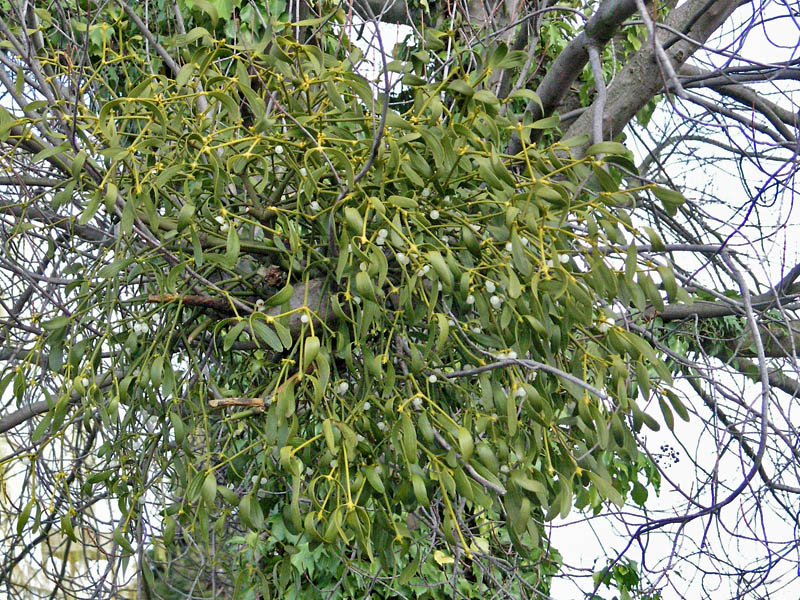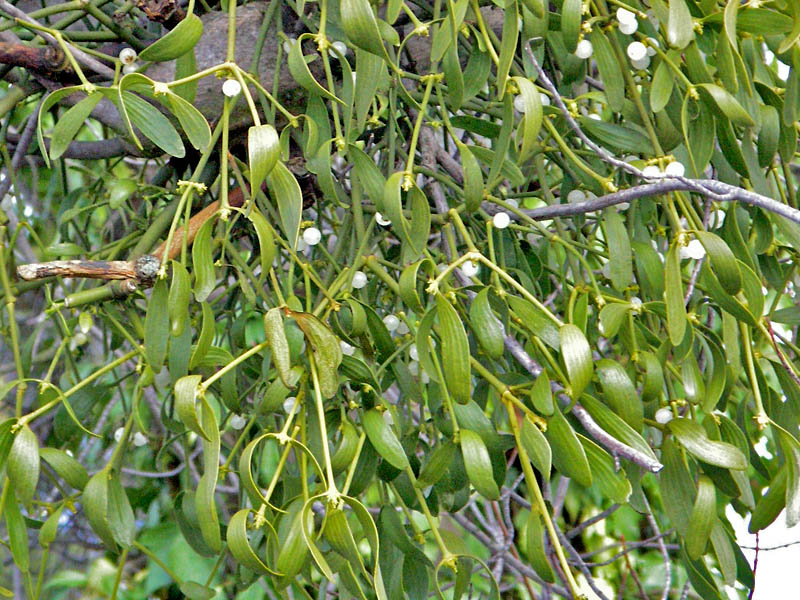| Shape | V. album produces a rounded, loose open form due to its regular and symmetrical doubling of its stems each season. |
| Landscape | V.album is a hemi-parasitic plant and although cultivated for commercial production of its branches and fruit for Christmas in Europe it is rarely seen in the landscape, especially in North America. I have only ever seen one plant growing in Ontario, and it was a rather pathetic example found on a crabapple at the Royal Botanical Gardens in Burlington. |
| Propagation | In early spring collect several fresh seed and squash (stick) them in clusters of 3-5 on the undersides of branches that are at least 5 cm in diameter on a suitable host. By using several fruit it increases your chances of success additionally having both male and female plants in proximity will help ensure that fruit is produced. In about 18 months you should see a hypocotyl emerge and begin to touch the bark, if this remains green it indicates potential success. Shortly thereafter a slight swelling should occur with a leaf emerging the following year. |
| Habitat | Occurs mostly in isolated colonies in parks, gardens, churchyards, hedgerows and orchards with some colonies existing for over 100 years. In England V. album is found primarily in the counties of Herefordshire, Worcestershire, Gloucestershire, Gwent and Somerset where it can become a pest, it is found outside of these counties but it is much less substantive. |
| Flower Description | Green ale and female flowers are borne on separate plants and bloom in February-March, they are pollinated by insects with each fruit producing one seed. |
| Fruit Description | A clear white berry is produced a full 12 months after pollination and contains one black coloured seed. The berry is quite sticky and hence assists in bonding the seed to a potential host. Fruit are often distributed by birds, in Europe the Mistie Thrush (Turdus viscivorous) and Blackcap (Sylvia atricapilla) are the most efficient at distributing V. album by wiping the berries on branches to remove the unpalatable seed. |

